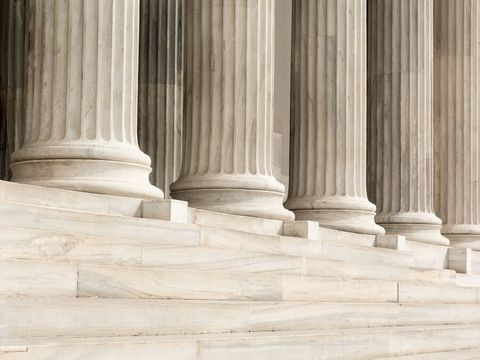Drone Use Brings New Advantages and Opportunities in the Energy Sector
Client Alert | 2 min read | 03.05.19
Unmanned aircraft systems, or drones, have become increasingly prevalent in the energy industry, as highlighted in a recent North American Electric Reliability Corporation (NERC) Lesson Learned. Energy companies can improve safety and increase productivity by using drones to perform high-risk or tedious tasks such as major storm damage surveys; line repair; substation/switching station and line inspections; power plant, wind farm, and gas pipeline inspections; and infrastructure security. However, energy industry participants interested in such drone use must be aware of the Federal Aviation Administration’s (FAA) extensive regulation over their operation.
Energy companies interested in using drones weighing less than 55 pounds to support their operations generally fly under the FAA’s Small UAS Rule (14 C.F.R. Part 107), which governs the commercial use of small drones, including restrictions on location and time of operation (the “Rule”). Under the Rule, commercial operators must register their drones with the FAA, obtain a remote pilot certificate by passing an aeronautical knowledge and safety test, and operate within the Rule. The FAA has published relevant guidance here and here. Some energy industry companies have chosen to use their own FAA-certified drone pilots; others have contracted certified third-party pilots.
While NERC highlights the advantages drones can provide in the energy sector, it cautions operators to be mindful that using drones for long durations or distances, or in hard to reach areas, can have additional complications, such as loss of battery power and guidance signals. These can compromise safety and operational success.
Additionally, some operations may require the drone to travel beyond the visual line of sight of the remote pilot in command, over people, or at night. Operators must request a waiver from the FAA for these types of complex operations. The waiver process is lengthy and requires a substantive application, although the FAA strives to review and decide waiver requests within 90 days.
Further, interested parties should be aware that FAA drone regulations are currently in flux. Recent developments have been discussed in previous client alerts here and here. Of particular note, FAA has recently issued a Notice of Proposed Rulemaking, discussed in a previous client alert here, which would streamline the waiver process regarding operation over people and operation at night. Interested parties should submit comments to the proposed rule by April 15.
Contacts
Insights
Client Alert | 5 min read | 12.12.25
Eleventh Circuit Hears Argument on False Claims Act Qui Tam Constitutionality
On the morning of December 12, 2025, the Eleventh Circuit heard argument in United States ex rel. Zafirov v. Florida Medical Associates, LLC, et al., No. 24-13581 (11th Cir. 2025). This case concerns the constitutionality of the False Claims Act (FCA) qui tam provisions and a groundbreaking September 2024 opinion in which the United States District Court for the Middle District of Florida held that the FCA’s qui tam provisions were unconstitutional under Article II. See United States ex rel. Zafirov v. Fla. Med. Assocs., LLC, 751 F. Supp. 3d 1293 (M.D. Fla. 2024). That decision, penned by District Judge Kathryn Kimball Mizelle, was the first success story for a legal theory that has been gaining steam ever since Justices Thomas, Barrett, and Kavanaugh indicated they would be willing to consider arguments about the constitutionality of the qui tam provisions in U.S. ex rel. Polansky v. Exec. Health Res., 599 U.S. 419 (2023). In her opinion, Judge Mizelle held (1) qui tam relators are officers of the U.S. who must be appointed under the Appointments Clause; and (2) historical practice treating qui tam and similar relators as less than “officers” for constitutional purposes was not enough to save the qui tam provisions from the fundamental Article II infirmity the court identified. That ruling was appealed and, after full briefing, including by the government and a bevy of amici, the litigants stepped up to the plate this morning for oral argument.
Client Alert | 8 min read | 12.11.25
Director Squires Revamps the Workings of the U.S. Patent Office
Client Alert | 8 min read | 12.10.25
Creativity You Can Use: CJEU Clarifies Copyright for Applied Art
Client Alert | 4 min read | 12.10.25
Federal Court Strikes Down Interior Order Suspending Wind Energy Development




